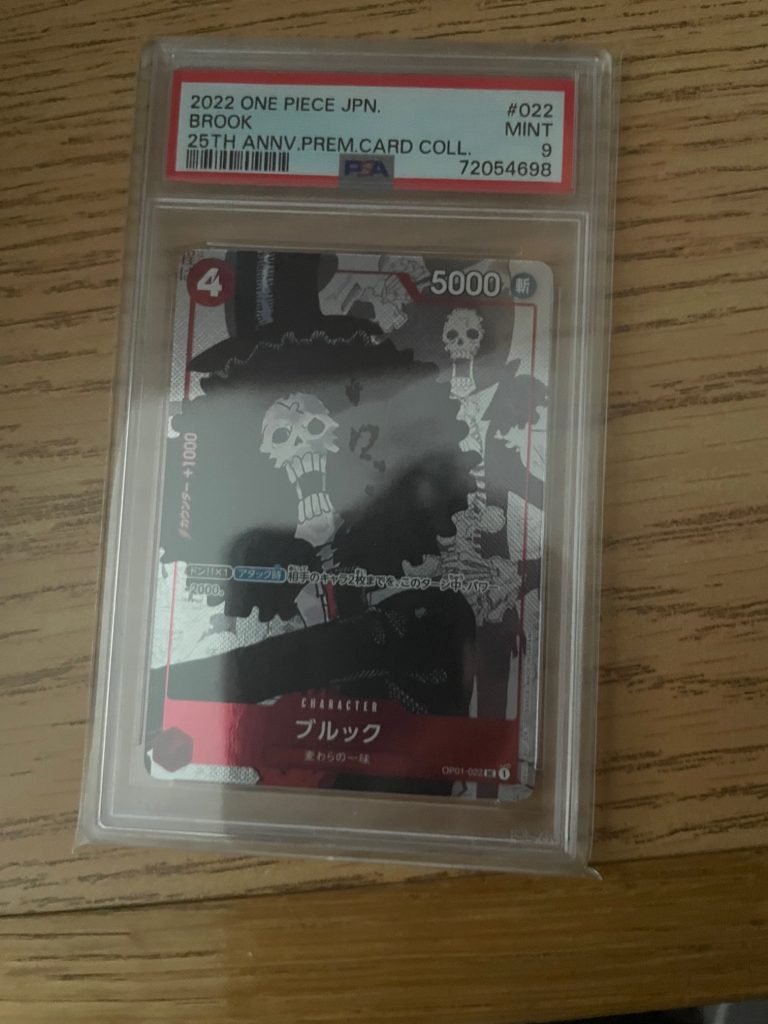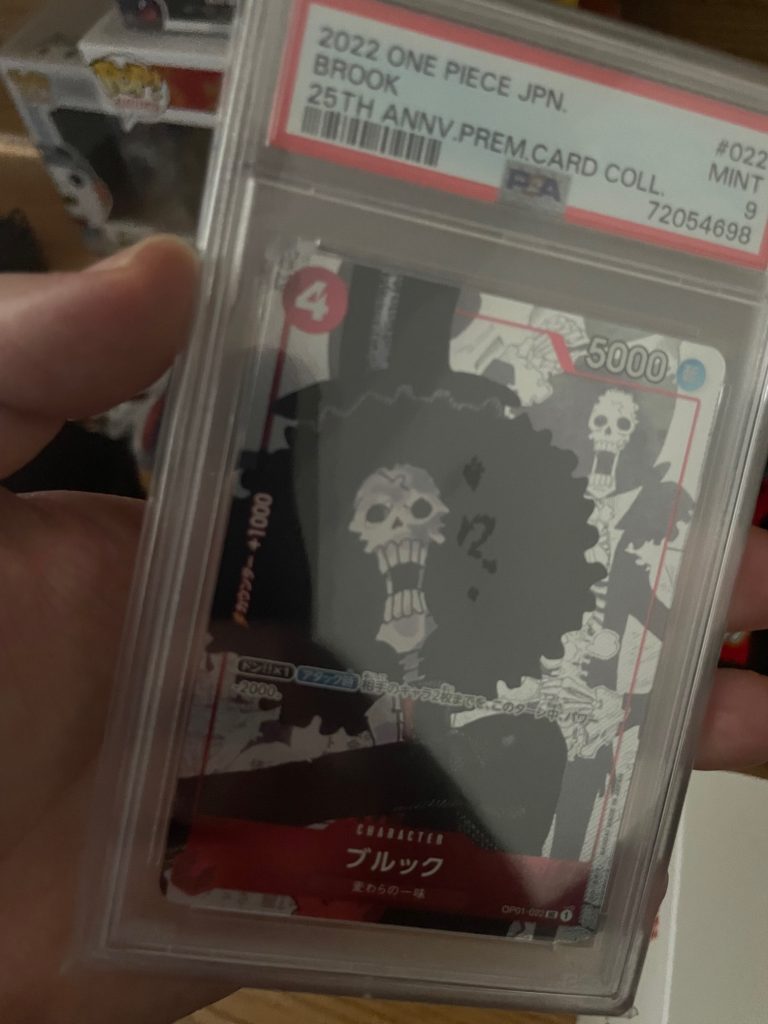Ever look through your existing collection and notice that your PSA-graded card has moisture trapped inside it? You’ll see circles or bubbles, especially on insert or Holographic cards.
Typically, there’s an iridescent pattern that’s unexplainable and uncommon. If yes, then you’re not alone, and an intriguing scientific phenomenon is behind it. Will go into why this happens and what to do to solve it.
It’s disappointing when you are looking through your collection and notice your PSA card has moisture, also known as ‘Newton rings,’ in the case. We will go through what it means and how you can prevent or fix the undesirable ‘fog’ within your cards. Another scientific explanation for this phenomenon is ‘Thin-film interference’.
Let’s explain “moisture in PSA cards” and make sense of these baffling visuals.
Why Newton Rings Show Up in Your Graded Cards
Remember these mesmerizing patterns you see when blowing bubbles as a kid? Or the vibrant streaks on an oil spill? Those are Newton rings. In fact, the moisture in PSA cards is not wet or water.
Where Do Newton Rings in Cards Come From?
The name gives away its historical origins. Sir Isaac Newton, back in 1666, described this phenomenon where interference patterns are created by light reflecting between two surfaces. You’re right on track if you’re visualizing two different plastic layers pressed together!
It’s the same logic that applies to card grading. Two clear, convex surfaces touching each other can create this visual disturbance. And voila, you have Newton rings! You can often see it when a smartphone screen protector doesn’t perfectly align with the screen, giving birth to that notorious “rainbow effect.”

The primary takeaway is that Newton rings don’t imply any defect or damage to your card. It’s merely an optical play. Many collectors, especially those new to the game, must correct this for actual moisture or a grading flaw.
How Do You Remove or Get Rid of Newton Rings from Graded Cards?
Unfortunately, once Newton rings appear within your cards, they are difficult to remove and likely here to stay. Yet, there are options for reducing them in size and or entirely.
Re-slabbing or pressing the card can temporarily shift the rings or bubbles again, while there’s no surefire way to remove them permanently. PSA explains Newton Rings further on what they are doing to solve it for the future. Newton’s Rings: Understanding the Encapsulation Illusion – PSA Blog (psacard.com)
PSA continually innovates and researches so that solutions might be on the horizon.
However, depending on the different types of graded card sleeves you use, you can significantly reduce them.
The Newton rings are negligible or nonexistent when changing the card sleeve from a genetic brand and switching to Cardboard Golden perfect fit sleeves.
Card Savers | Trading Card Sleeves (cardboardgold.com)
We’ve tested it and found it works exceptionally well once using a ‘cardboard golden’ sleeve. Especially when you let it sit for up to 30 minutes in the new sleeve, use your thumb to push down the bubbles until they disappear slowly.
If that does not work – consider reaching out to PSA support to return the card to get re-encapsulated.
Is There Air in the Graded Cards?
PSA holders for trading cards protect the card but are not vacuum sealed.
Yet, a little air or slight movements inside don’t equate to any harm or degradation to the card.
We’ve talked with several collectors who have experienced this phenomenon, and the overwhelming response we got was that ‘there’s no risk or moisture within the encapsulation.’ From our experience, it did not damage the actual card when looking at the card further.
Additionally, PSA and other card grading companies are looking to include embalming fluid to ensure it doesn’t happen over time to other cards. The new grading slabs will now account for this.
Graded Cards: A Closer Inspection on Encapsulation
PSA’s primary focus has always been protecting and presenting your prized collectibles. The perceived ‘moisture spots’ are, in reality, areas devoid of liquid.

Let’s break down a few misconceptions.
- What looks like moisture isn’t actual liquid. Instead, it’s the consequence of Newton’s Rings, which came to light when collectors were puzzled by what seemed like water droplets in their PSA-encapsulated items.
- Graded companies cause the circles or bubbles. It wasn’t long before experts realized it was the effect of light passing through the flat surface of the cardholder and onto the concaved sleeve inside.
For particularly thin cards or stickers that might shuffle within the holder, PSA sometimes uses an additional sleeve for stability, which can sometimes contribute to the appearance of these rings.
Overcoming the Newton Ring Conundrum
Recent instances highlighted another challenge for card enthusiasts. When combined with specific plastic inner sleeves, some modern cards react oddly. While they looked eerily like Newton’s rings, the outcome was different.
A residue, almost sticky, formed, especially under specific conditions:
- High humidity areas, particularly the coastal southeast.
- Use of inferior-quality penny sleeves.
- Certain Panini cards from 2016-2019.
Storing these cards in thicker penny sleeves and avoiding overstuffing storage boxes can help mitigate this. If you encounter the residue, patience remains the top priority.
Avoid direct peeling, use moisture-absorbing methods like rice, and handle carefully. Additionally, direct sunlight claims to reduce the Newton rings after 20 to 30 minutes of exposure.
Prevent Newton Rings on Future Cards
Though seemingly perplexing, Newton rings or also known as Moisture in PSA cards are just a natural outcome of the grading process.
It mostly happens with trading cards like One Piece, for example, where the size of the card is smaller, so PSA has to encapsulate the card with a penny sleeve to help stabilize the card.
So, the next time you spot that rainbow effect or think you see moisture, remember, it’s just science doing its thing! Keep collecting and exploring, and let’s hope for more innovations to enhance our card-collecting experiences.
If you enjoyed reading this article, you may also like:
- The Concept of PSA Do Not Holder When Grading Cards
- How Long Does It Take For PSA To Grade Your Cards
- The Slab Junk Era Origins, Lessons and Future Outlook
Sports card hobby enthusiast (originally from New York) who can’t resist ripping cards and eating donuts on the weekends. Passionate about all collecting, have been collecting football cards and other memorabilia for half a decade. Enjoys going to card shows, visiting card shops and getting to know other collectors. Owner of NOWCollectibles a collectible e-commerce business – online card shop for buying affordable cards helping connect sports fans with their favorite teams and players. Follow my personal IG to see PC: @NowCollects See my latest articles here: NowCollectibles Articles (thinksportscards.com)
